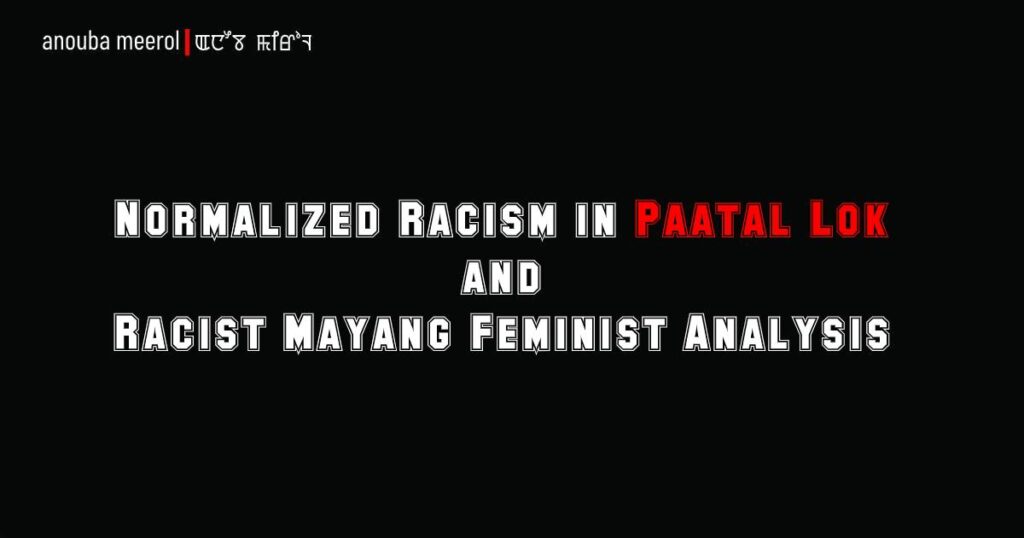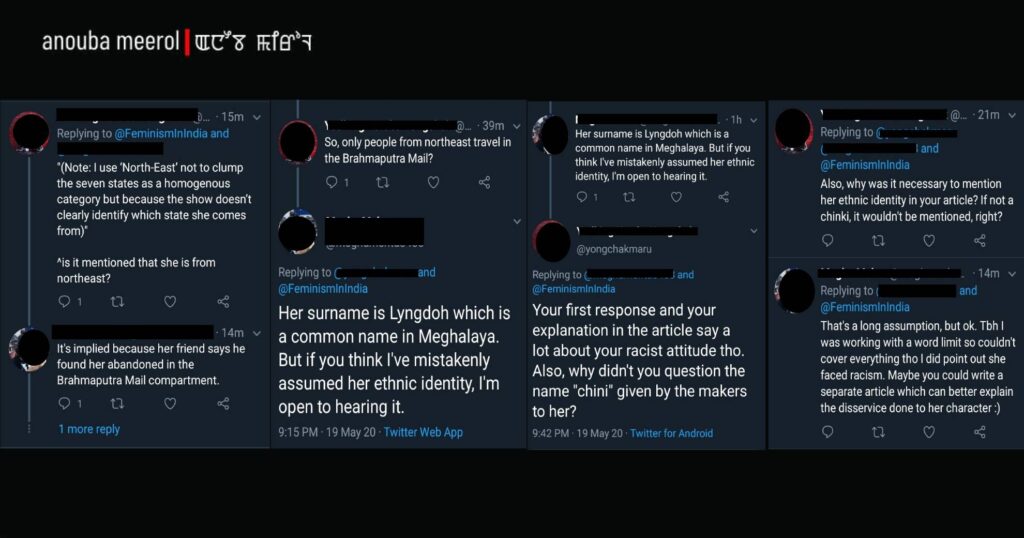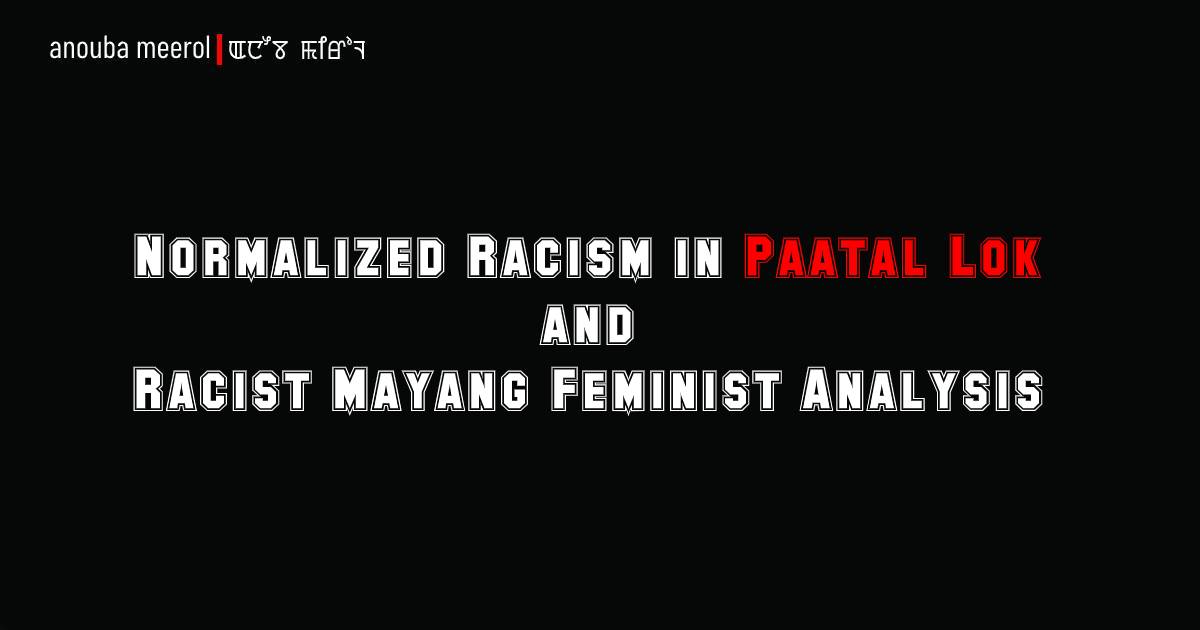
An act of innocence seems to be the perfect medium to perpetuate and normalize racism, and Paatal Lok confirms it quite subtly. Street kids walk around chanting “chinky mata” with a chinky kid dressed in “mata-attire” on the street and in train compartments. They also name her ‘Chini’ because “she is from Chin”. Makers seem to have no qualms about it and in letting it pass as if no big deal. Unlike other acts of visible violence in the web series that come with some remorse, this symbolic/slow violence gets a free pass riding on the innocence of the kids. It is not just a mere observation. One can see the impact of this subtle symbolic violence of racism in the very responses of the show. None of the reviews/articles of the show address racism, it rather gets overshadowed by the graphic-ness of the other visible violence. Thus, racism sneaks in as a normal act while people are busy praising/critiquing the visible violence, and that is how Paatal Lok normalizes racism.
After learning the story of Mary Lyngdoh, there is an unsettling feeling of why the makers choose to go to Manipur and search for a transwoman for the role. It is neither a question of whether a chinky transwoman should/shouldn’t act in a Hindi web series nor about a chinky playing a role written specifically for a chinky. Rather, it is about the background and history of the character. She was abandoned in a train by her uncle as a kid and she grew up with other street kids. It sounds like a very common story of a mayang character which has been given a chinky face. Now, the confusion is why would the makers take all the pain to go to Manipur and look for a transwoman whom they do not even know exists, especially when the role could have been played by any other mayang transwoman. On one hand, there is Priyanka Chopra that appropriates and wears chinkiface for the role of Mary Kom, who is a real chinky personality. On the other hand, there is Paatal Lok that overcompensates the idea of diversity and gives a mayang character a chinky face. Both the cases look like two sides of the same coin of racism. It contributes to the ever occurring narrative to engulf chinkies in mayang stories, tokenizing us to earn brownie diversity points.
In addition to this, the very decision of the makers to give her the name ‘Chini’ and a racist history to it is appalling. The casualness in this decision and use of the word “chinky” nonchalantly depict the normalization of racism and their indifference towards the issue of racism.

While the show contributes to normalizing racism in this country, especially at a time when the racial attacks are rampant, Feminism In India does a feminist analysis that reeks of racism. In the analysis, the author writes, “Mary ‘Chini’ Lyngdoh, a transgender woman who is presumably of North East ethnic origin. (Note: I use ‘North-East’ not to clump the seven states as a homogenous category but because the show doesn’t clearly identify which state she comes from).” In a Twitter thread of the article, a user asks, “is it mentioned that she is from northeast?” The author replies, “It’s implied because her friend says he found her abandoned in the Brahmaputra Mail compartment.” This very response is rooted in the racist attitude of the author. Nowhere in the show does it mention the state or ethnic identity of Mary Lyngdoh, yet the author decides to presume the identity based on the train she was found in and the author’s racial prejudice of Mary Lyngdoh’s chinky look. The author presumed that Mary Lyngdoh is from northeast because of the Brahmaputra Mail and chinky look combination. The Twitter user further asks, “So, only people from northeast travel in the Brahmaputra Mail?” After almost half an hour, the author replies, “Her surname is Lyngdoh which is a common name in Meghalaya. But if you think I’ve mistakenly assumed her ethnic identity, I’m open to hearing it.” Although there is some truth to the second response, her first response and its immediateness raise the doubt bar high. Most importantly, there is no need to even speak about her ethnic identity. If she was a mayang, the question of ethnicity would not arise. What confirms the doubt is her response to another question that the user asks, “why didn’t you question the name “chini” given by the makers to her?” She responds, “I was working with a word limit so couldn’t cover everything tho I did point out she faced racism. Maybe you could write a separate article which can better explain the disservice done to her character 🙂” The excuse, the claim to a brownie point, and the order along with her immediate first response confirm the racist attitude. It does not come as a surprise since Feminism In India is known for such acts of racism in their desperate attempts of diversity and inclusivity. As the Twitter user says, this “mayang feminist analysis comes with a word limit that excludes racism.”

I’m from darjeeling living in Delhi and I can’t tolerate anything that is wrong for my nepali community